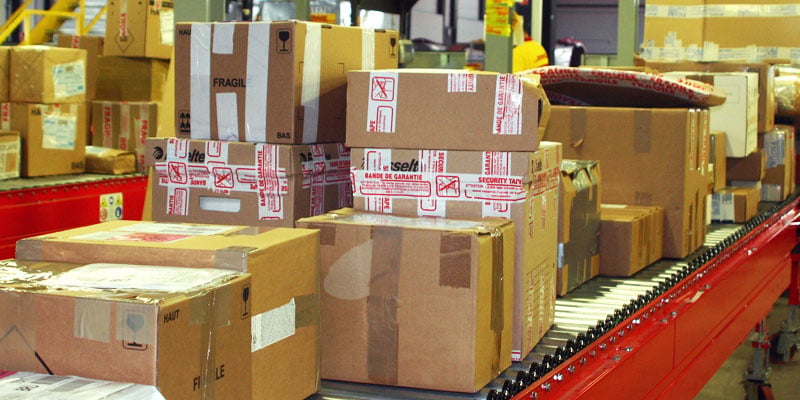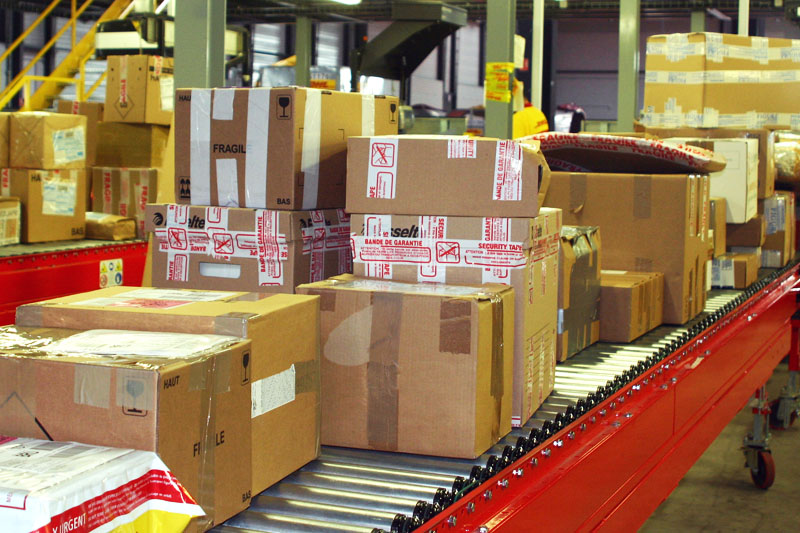
Parcel volumes have been growing sharply for almost a decade and just accelerated. According to Pitney Bowes, there’s been about 20% growth annually since 2013. Last year, this added up to 103 billion packages shipped around the world and about 15 billion in the United States. This year, the peak of the previous holiday season was surpassed in the summertime thanks to the pandemic, with the busiest season still ahead.
There’s only so much volume that individual parcel carriers can handle. Quick ways can be found to bring on new drivers or vehicles, but once space runs out at distribution facilities, it runs out. And it can take a year or more to build another fully functional center. Nobody anticipated the exact timing of this pandemic and built adequate capacity in advance.
This has landed us in the current situation. We’re seeing UPS and FedEx issuing surcharges for high volumes during peak season since they simply can’t handle it all. They’re now focused on handling the most profitable business rather than gaining market share.
What should shippers do to manage through the rest of 2020 and into 2021?
To get a better understanding of how shippers can manage their parcel shipments in this environment, we turned to parcel expert Jerry Hempstead. He had a few great pieces of advice in a recent interview.
First, you need to be talking regularly to your reps. He encourage shippers to be talking to their incumbent carrier at least once a week and to have a relationship with a competing carrier rep. If you’re interested in working with regional carriers, he advised that you should be talking with their reps too.
Second, you should start negotiating your contract as soon as possible. “Very few contracts have penalty language, although the carriers—both big ones—are trying to insert language into the contracts where there is a penalty if you open up your business prior to its expiration date or along its life.” If you have a contract with FedEx, there’s nothing to stop you from negotiating it now. Everything is negotiable, and even during times of growth we’ve heard stories of huge savings by simply placing a call.
Another suggestion is to look into regional parcel carriers. When you work with these, it’s best if you can deposit your shipments directly into their hub.
Here are a few regional parcel carriers to consider:
- OnTrac
- Spee-Dee
- United Delivery Service (UDS)
- Pitt Ohio
- Lone Star Overnight
- Lasership
- Dicom
- Courier Express
- GSO
- IntelliQuick Delivery
- International Bridge
- S. Cargo
- Pace
Jerry advises to tender whatever you can to regional parcel carriers right now and give the rest of the business to the big parcel carriers. Shippers will also want to consider the services offered by DHL Ecommerce and Pitney Bowes, who drop ship through regional USPS hubs, amongst other things.
A few things to look for in regional carriers are high on-time delivery rates, low damage claim rates, and good customer service. Find out if you’ll have the option of contacting a live person and when they’ll be available. Unlike larger parcel carriers, a regional parcel carrier’s customer service team could have more leverage in making things happen to resolve service issues, which could make a big difference during the busy season. While regional parcel carriers usually offer quicker delivery times at a lower price than the big parcel carriers, that may not be the case this fall as capacity is maxed out. Nevertheless, they may be the best, or only, option for some shippers.
What’s ahead for 2021?
Jerry warns that in the second quarter of 2021, parcel shippers will be looking to match or exceed the revenue growth of 2020. If this can’t be done with volume growth—and it would be a challenge to exceed the volumes of 2020—this could come down to even greater rate increases than usual. This is something to factor into your budget if you haven’t already.
Historically the two big parcel carriers have been announcing a 5-6% increase on their base rates. Most mid-size to large shippers though will have some type of negotiated cap in their contacts, whether that’s 3-4% or less. Whether this cap will amount to overall savings for shippers is less clear, because of other aspects of the overall cost such as accessorial or minimum charges. Jerry explains:
“What’s not protected in most of that language is increases to the accessorial charges—they don’t count. Often not included are increases to the minimum charge. You might have an 80% discount on your ground business but you don’t get to enjoy it if you’ve agreed to pay the minimum charge and a big percentage of your business is 1-10 pounds where you’re hitting the minimum charge in all the cells.”
Want help analyzing how changes in parcel shipping volumes or rates could impact your business? One way to analyze the impact of parcel changes on overall parcel costs is to use tools like our Parcel Toolbox.
To hear more insights from Jerry Hempstead, listen to the full interview.

